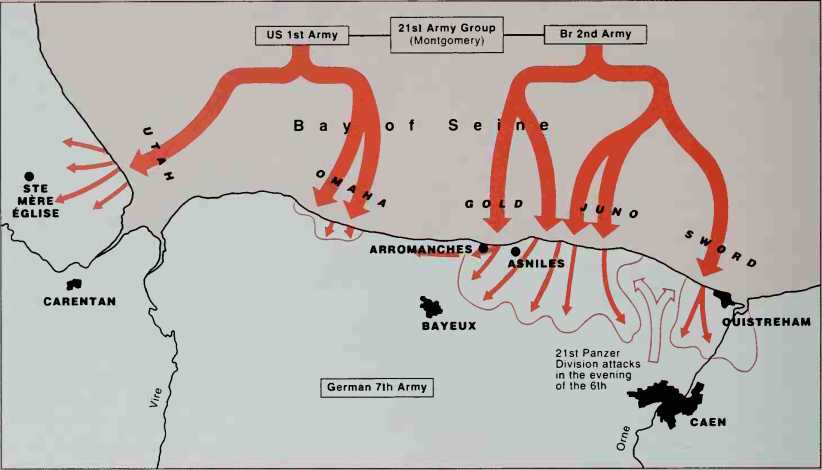During the night of 5/6 June 1944, the armada carrying 21st Army Group - the ‘Operation Overlord’ strike force - approached the coast of Normandy. The assault was to be concentrated on five beaches: the two in the west (code-named ‘Utah’ and ‘Omaha’) were the responsibility of the Americans under Bradley; the three in the east (‘Gold’, ‘Juno’ and ‘Sword’) were the target of the British under Dempsey. The army group was under the overall command of Montgomery. Early in the morning of the 6th, the reconquest of continental Europe began as the first Allied forces hit the beaches and struggled to establish beachheads. German resistance was tough, but the liberation was underway.

Support for the soldiers and sailors promised to be greater than anything known before. Construction firms all over the United Kingdom set to work on a top secret engineering project, each company manufacturing a different component for a giant concrete jigsaw. Few of the workers involved could guess that they were building massive harbours called ‘Mulberries’, to be towed across to France for docking purposes by 150 tugs. Now the invading forces didn’t have to capture a ready-built harbour, always a costly exercise in terms of human lives. Tanks, trucks, big guns and supplies would roll along the Mulberries with ease.
¦ PLUTO ¦
A pipeline under the ocean (codenamed ‘Pluto’), made from steel or sometimes steel and lead, was installed to bring essential fuel quickly from Britain to France; it was laid on the sea bed by slow-moving tugs. After the war, it was salvaged to provide plumbing for 50,000 houses.
Reconnaissance was meticulously detailed. Air force pilots flying
Spitfires stripped of ammunition to make them as speedy as possible photographed as much of the coastline as they could. In addition, an appeal for holiday photographs and postcards of the region reaped thousands of pictures of the area. Further aided by maps provided by the French Resistance, cartographers began to build up a three-dimensional impression of the targeted Normandy beaches.
Midget submarines went on dangerous nightly missions to the Normandy coast. Their occupants
Braved the water and the German patrols to bring back soil and sand samples and up-to-date information on the position of German defences.
Last but not least the British authorities embarked on a highly detailed decoy campaign to fool the Germans, who were equally involved in reconnaissance.




 World History
World History









